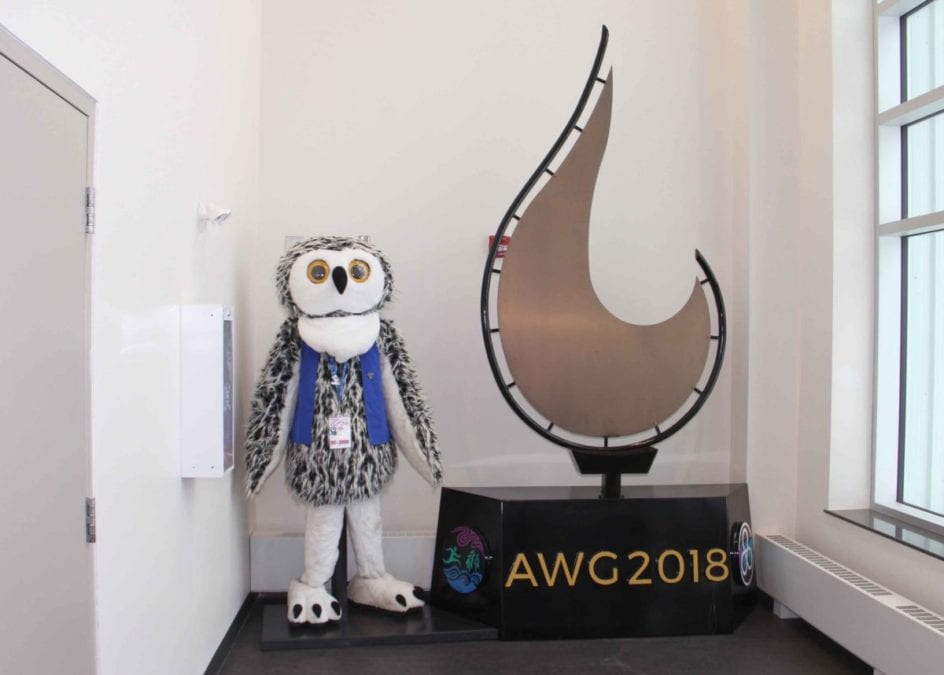
Paul Bickford/NNSL photo
A permanent reminder has been erected of one of the finest moments in the sports history of Hay River.
An Arctic Winter Games Legacy Wall has appeared at the Hay River Community Centre.
The wall features two icons of the 2018 South Slave Arctic Winter Games – the costume of the games mascot Kechi and the sculpture of the games flame.
And above is a reproduction of a mural featuring various images of Hay River. It was created just a few months before the games as part of a national project to celebrate Canada 150.
Stephane Millette, director of recreation with the Town of Hay River, said it is important to remember the games that were hosted in partnership with Fort Smith.
"It's important that we have symbols and things that remind us of the things we've accomplished," he said.
Millette noted that the Inukshuk near the fire hall has remained as a legacy from the 1978 Arctic Winter Games that were hosted by Hay River and Pine Point.
The torch sculpture from the 2018 games – 11 feet high, six feet wide and weighing a couple of hundred pounds – was designed and built to become a legacy item.
"The idea was to have a legacy much like the Inukshuk and something to recognize that the South Slave accomplished such a big feat, and to have something that the town – everybody from young to old – can remember their role and the experience and what they saw when the games happened here in 2018," said Millette.
However, he said it was not easy to find a spot for it.
Eventually, a wall was chosen at the bottom of the main stairwell at the community centre, and the legacy wall was completed in mid-October.
"It took quite some time to come up with a concept that everybody figured would work," said Millette, noting the idea has been discussed since last winter.
The legacy wall is 20 feet high to the top of the mural.
"The feedback has been good," said Millette. "People are happy with how it looks. And people are happy to have something to remember the games by and have those positive memories, and celebrate what we accomplished."
Karen Rowe, who was the chair of the committee which organized the opening and closing ceremonies for the AWG, is pleased with the new legacy wall.
"I'm glad that it's getting it's recognition," she said, noting the torch sculpture was designed to be a legacy piece. "I'm happy that it's being placed in the arena where the community can see it and be reminded of the games."
Rowe noted that the flame sculpture was always intended to eventually be displayed at the arena, even though there had been some discussion about keeping it outside.
"It's not the same sort of structure as the big rock Inukshuk," she said. "It just wasn't felt that it would have the same durability. So it was felt that inside in the community centre would be a safer place where it would just last longer and be viewed by the community."
The reproduction of the mural at the top of the wall measures six feet by nine feet.
Millette said the original is 12 feet by eight feet and too big for the wall, so a smaller image was created by Poison Painting.
The artwork was created under the guidance of an Edmonton group called Mural Mosaic, and is one of 150 murals created coast to coast to celebrate the 150th year of Confederation in 2017.
More than 450 community residents helped paint the over 600 small tiles which make up the mural.
"We're looking for a spot that we can put up the original where people can actually walk up to it and point out their tile," said Millette. "We just haven't found a spot where the original can go and be accessible to everybody."